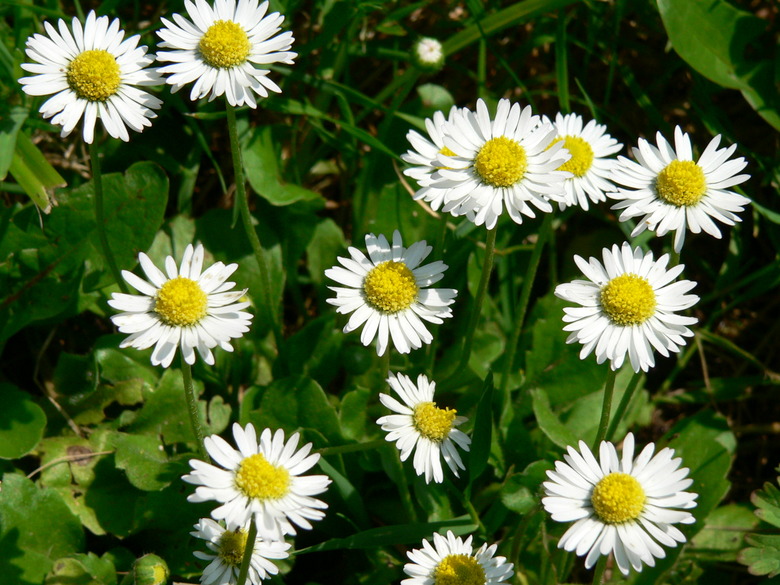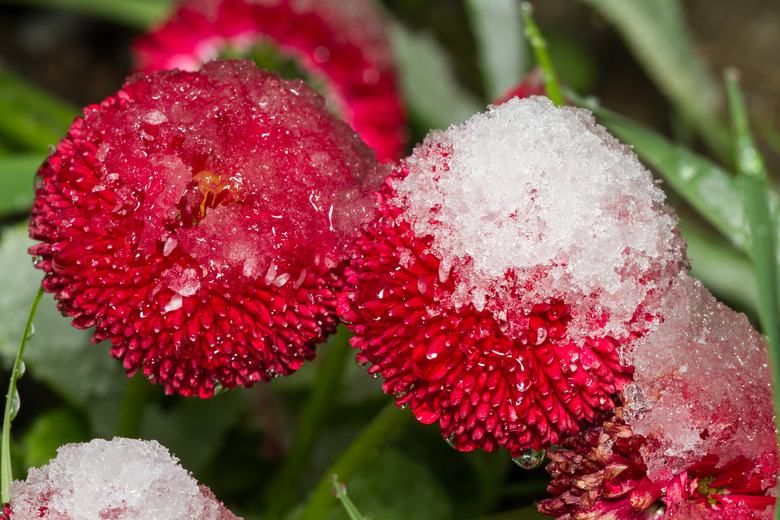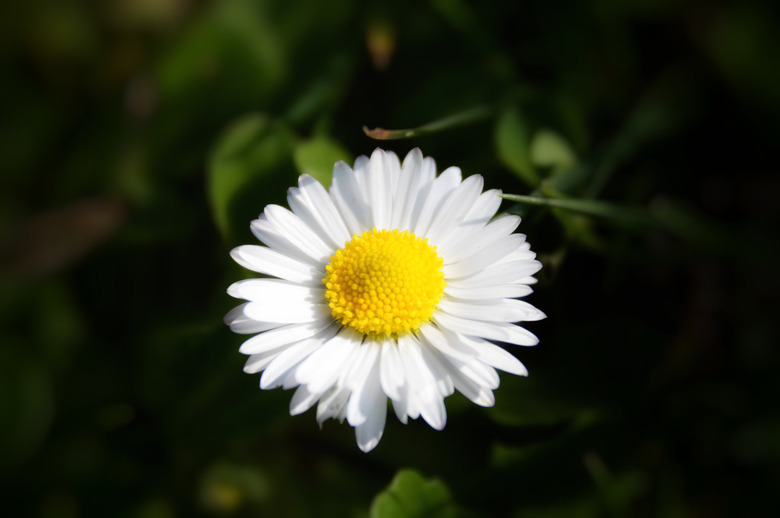How To Winterize English Daisies
Are English Daisies Hardy?
Part of growing English daisies (Bellis perennis) is learning how to care for them during the winter months when they are not actively growing. These cheery, adaptable flowering plants grow as biennials or perennials within USDA plant hardiness zones 4 to 8, **so they are winter hardy in all but the coldest climates.**
Although it is not absolutely necessary in most areas, a little extra protection during the winter months will help the plants revive more quickly in spring.
Whether you live in a mild coastal climate or a location with bone-chilling winters, little effort is needed to winterize daisies, and it will pay dividends when the dainty white flowers appear the following spring in greater numbers.
Tip
Other common names for the English daisy are common daisy, marguerite and lawn daisy.
About English Daisies
The dainty flowers, short stature and carefree manner with which English daisies grow make them an ideal choice for informal flower gardens and for low-maintenance groundcover. These herbaceous plants are grown as annuals, biennials or perennials depending on how harsh winter is locally.
English daisies can take up to five years to reach a mature height of 3 to 6 inches, with 9-inch-wide rosettes of oblong leaves. The flowers come in single- and double-flowered varieties that form a galaxy of flowers against their dark green foliage in spring and early summer.
Tip
Be mindful when handling or working closely with English daisies because all parts of the plant are moderately poisonous. Pregnant or nursing mothers should not touch English daisies at all.
Growing Conditions
English daisies prefer full sun in the morning and partial shade at midday when the sun is strongest. They also grow well in areas with part shade all day, although they may bloom less abundantly.
Highly fertile, moist soil is best for English daisies, but it also provides the right conditions for invasiveness. The weedy growth of this plant and its penchant for spreading into fertile, irrigated soil is what earned it the common name "lawn daisy."
English daisies originated in Europe and will tolerate fairly harsh winter weather without sustaining serious damage. However, some winterizing is a good idea in areas colder than USDA zone 5.
Winterizing English Daisies
Winterizing English daisies is all about providing a protective covering to keep the foliage and roots from freezing.
A layer of mulch will insulate the plant and the surrounding soil to keep it safe from the cold, but you must choose the right type of mulch and apply it at the right time. Putting down mulch too early will prevent the plant from going fully dormant, while waiting too long can result in damage from the cold.
- Use lightweight and breathable mulch, such as straw or pine needles. Heavy mulch, like wood chips or pebbles, will crush daisies, while cloth mulch can suffocate them by trapping moisture and limiting air exposure.
- Spread a 5-inch-thick layer of mulch over English daisies when growing them in central Oregon, which is roughly USDA zone 6. A thinner 2- to 3-inch layer of mulch is fine in the warmer end of their hardiness zone range.
- Spread the mulch over the plants after the first frost once the ground has chilled and the plant has become dormant. Do not spread the mulch if the plant has flowers or is showing signs of active growth.
Established English daisies will tolerate some light foot traffic, but first-year plants may suffer if walked on too much. It is a good idea to install stakes around the plants after spreading the mulch so that you don't accidentally walk on them during the winter months.
Caring for English Daisies
Nothing brightens a spring garden like white-petaled daisy flowers with their sunny yellow center. Thankfully, English daisy plants revive quickly in spring and will start blooming prolifically by early summer if they receive the right care.
Remove the Mulch
The first thing to do in early spring is to remove the mulch layer when soil temperatures start to warm. In colder climates, it is best to wait until after the last frost to rake off the mulch, but it can be removed earlier in mild-winter climates. Use a leaf rake with flexible tines to minimize damage to the plant.
Feed the Soil
English daisies need very fertile, well-draining soil to bloom well, so fertilizer is an important part of English daisy care in spring. Apply 12-6-6 fertilizer to the entire bed at a rate of 1 to 2 pounds per 100 square feet of bed area or apply complete organic fertilizer, such as 3-4-4, at a rate of 4 to 7 pounds per 100 square feet.
Seasonal Watering
English daisies need consistently moist soil during their bloom time, but too much water can cause problems. Provide 1 inch of water each week starting in spring. English daisies may need a little extra water during hot, dry summer weather. Always check the soil with your finger and only water if it feels dry an inch below the surface.
Mulch for Moisture
English daisies are usually dormant by late summer, because they do not tolerate high heat very well. Heat intolerance is especially bad for new plants that haven't yet established a deep root system, but all English daisies will melt back as temperatures rise.
A layer of mulch spread between the plants will help keep the soil cool and moist during hot summer days. Using a 1- to 2-inch layer of compost rather than traditional mulch will not only help with soil moisture but can also take the place of fertilizer in all but the poorest soil.


